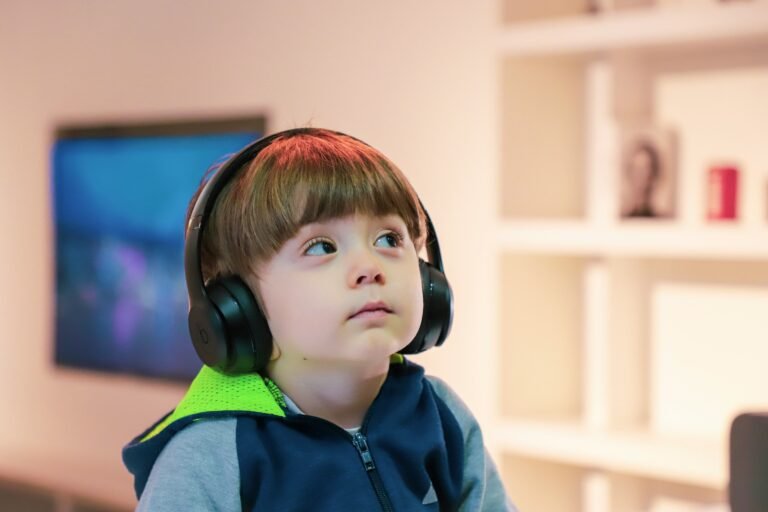How to tell if someone is mildly autistic?
Mild autism, often referred to as “high-functioning autism,” involves traits of autism that are less pronounced but still significantly influence daily life. Recognizing mild autism in someone can be challenging, especially because individuals with mild autism may have learned to mask their traits to fit into social norms. However, understanding these subtler signs can help you provide support or gain insight into behaviors that may seem unusual but are part of their unique way of experiencing the world.
The following are some signs and characteristics that may indicate someone is mildly autistic. Keep in mind that autism is a spectrum, and each person’s experience is unique.
1. Subtle Social Challenges
One of the most common indicators of mild autism is difficulty in social situations, though these challenges may be less obvious than in those with more pronounced autism traits. Someone who is mildly autistic might:
- Seem shy or reserved in social settings
- Struggle with small talk or find it uninteresting
- Avoid eye contact, though they may try to make it at times
- Misunderstand jokes or sarcasm, leading to occasional social missteps
- Prefer one-on-one interactions or small groups to large social gatherings
People with mild autism often experience social exhaustion after interacting with others and may need time alone to recharge.
2. Literal Interpretation of Language
A literal approach to language is common in those with mild autism. They might find idioms, metaphors, or sarcasm confusing and prefer direct, straightforward communication. For example, if you say, “That assignment is a piece of cake,” they might take a moment to realize it’s a figure of speech, or they may interpret it literally. This trait can lead to misunderstandings in conversations, especially with people who use a lot of figurative language.
3. Intense Focus on Specific Interests
Individuals with mild autism may have intense, narrow interests that they are highly knowledgeable about. They may enjoy learning everything about a particular topic, such as history, technology, or nature, and can often spend hours engaged in these activities. They might talk enthusiastically about their interests, sometimes unaware that others may not share the same level of enthusiasm.
4. Repetitive Movements or “Stimming” Behaviors
While stimming behaviors are often more noticeable in people with classic autism, individuals with mild autism may also engage in subtle forms of stimming, such as:
- Tapping fingers or feet
- Twirling hair or fiddling with objects
- Rocking slightly when sitting
- Repeating specific phrases or sounds
These behaviors can help them manage stress, calm down, or focus. If you notice someone frequently engaging in these small repetitive movements, it could be a form of self-regulation.
5. Sensory Sensitivities
Sensory sensitivities are common in mild autism, though they may be less intense. This could include:
- Discomfort with certain textures, sounds, or lighting
- Strong aversion to particular fabrics or clothing tags
- Difficulty focusing in environments with a lot of sensory input, such as crowded places
- Preference for familiar foods due to their texture, taste, or smell
These sensory sensitivities can make specific environments uncomfortable or even overwhelming, and the person may avoid them when possible.
6. Preference for Routine and Predictability
People with mild autism often prefer routine and may become anxious when things change unexpectedly. They might have a strong preference for predictability, relying on daily habits and routines to feel comfortable. For example:
- Eating the same breakfast each day or following a set routine before bed
- Experiencing stress if plans change suddenly
- Needing extra time to adjust to new situations or environments
Routine provides a sense of security, and sudden changes can feel overwhelming, even if they seem minor to others.
7. Challenges with Executive Functioning
Executive functioning skills, which involve planning, organizing, and completing tasks, can be an area of difficulty for those with mild autism. You might notice that they:
- Struggle with time management and often feel rushed or forgetful
- Have difficulty organizing tasks or belongings, leading to clutter
- Procrastinate or have trouble starting tasks, even if they’re interested in them
- Find it hard to switch focus from one activity to another
These challenges can impact daily life, making it harder to keep up with responsibilities at work, school, or home.
Table: Common Signs of Mild Autism
| Sign | Description |
|---|---|
| Subtle Social Challenges | Shyness, limited eye contact, discomfort in group settings, struggles with small talk |
| Literal Interpretation of Language | Prefers direct communication, struggles with idioms and sarcasm |
| Intense Focus on Specific Interests | Narrow, in-depth interest in certain topics, may talk about them with enthusiasm |
| Repetitive Movements or Stimming | Small repetitive movements like tapping, fiddling, or repeating sounds |
| Sensory Sensitivities | Sensitivity to textures, sounds, lighting, may avoid certain environments |
| Preference for Routine | Reliance on daily routines, difficulty with sudden changes |
| Challenges with Executive Functioning | Issues with time management, organization, and task completion |
Recognizing Mild Autism in Daily Life
Recognizing mild autism involves observing how someone interacts with the world around them. People with mild autism are often capable of adapting to certain social expectations, which can make their autism harder to notice. Here are a few general tips to keep in mind if you suspect someone may be mildly autistic:
- Be patient with social differences: Allow them time to respond or process social cues in their own way.
- Provide direct communication: Clear and direct language can prevent misunderstandings, especially in social or work-related contexts.
- Respect their preferences: If they prefer routines or dislike certain environments, showing understanding can create a more comfortable interaction.
Mild Autism in the Workplace
People with mild autism can be successful in the workplace, especially in roles that align with their interests and strengths. They may excel in positions that require attention to detail, problem-solving, or in-depth research. However, they may benefit from accommodations, such as clear instructions, structured routines, and minimized sensory distractions.
Supportive strategies could include providing them with:
- Written instructions or clear guidelines for tasks
- A quiet workspace to reduce sensory overload
- Extra time to adjust to new tasks or environments
These small adjustments can make a significant difference, allowing them to thrive and contribute effectively.
Frequently Asked Questions
Can someone with mild autism live independently?
Yes, many people with mild autism live independently, have jobs, and maintain relationships. While they may need support in specific areas, their independence often depends on factors like executive functioning skills, social support, and their ability to adapt to sensory environments.
How can I help someone with mild autism in social situations?
You can support them by allowing space for breaks, avoiding sensory-overloading environments, and using clear, straightforward language. Being patient and understanding when they might miss social cues can also help.
Is mild autism the same as Asperger’s Syndrome?
Mild autism and Asperger’s Syndrome share many similarities, particularly in terms of intelligence and communication skills. While Asperger’s is no longer a separate diagnosis, many still use the term to describe traits associated with mild autism.
Do people with mild autism always have sensory sensitivities?
Not necessarily. While sensory sensitivities are common, they vary widely in intensity. Some individuals with mild autism experience minimal sensory issues, while others are more sensitive.
How is mild autism diagnosed?
Mild autism is typically diagnosed by a professional through behavioral assessments, developmental history, and interviews. A specialist evaluates the individual’s social, communicative, and sensory behaviors to determine if they align with autism criteria.
Final Thoughts
Recognizing mild autism involves understanding subtle but impactful differences in how a person interacts with the world. These individuals often have unique strengths, interests, and sensitivities that shape their experiences. While their challenges might not be immediately visible, understanding and supporting their needs can lead to positive and fulfilling interactions. Whether in social settings, workplaces, or personal relationships, showing empathy and embracing these differences allows people with mild autism to feel accepted and valued for who they are.







